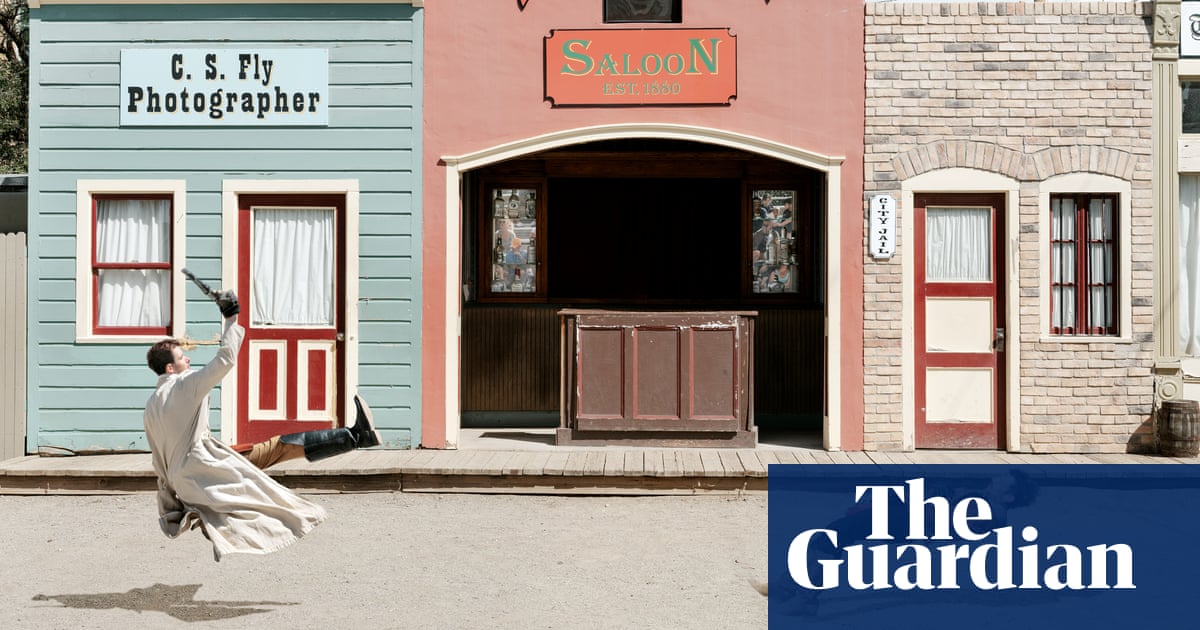
’ve been shooting street gangs in Los Angeles since the early 80s. For whatever reason, I always seemed to gravitate towards the gangs with the potential for violence. A contact in the LA county probation department helped me get started. He took me to some of the people on his caseload and, from there, I started to drive around the neighbourhoods with my photographs, stopping people on the street, saying: “Here’s what I’ve done. Would you like some photos?” Gang members like having their pictures taken. They’re extremely proud of their area, and so by photographing them you’re highlighting their neighbourhood.
As far as I remember, this picture was taken in 1982 in the Pico-Union area near downtown LA. It was – and still is – an area of immigrants, a poor district with a lot of apartment housing. At the time, it was pretty much ruled by the 18th Street Gang, before the rival MS-13 gang gained a stronghold.
The two boys were at a quinceañera, which is a celebration of a girl’s 15th birthday. They all do this waltz-type dancing and the older boy here was a participant in that. You can see he is wearing a tuxedo-style shirt while the youngster, who obviously couldn’t afford it, is wearing more typical clothing. It was taken quickly. I just let the two boys do what they wanted to do. This gang have their own poses, so you don’t tell them how to stand – they’re creating a look that says, “This is our gang, this is who we are.” Both boys are doing the 18th Street hand signs.
The younger boy is the interesting one for me. He is trying so hard to put himself in the gang, but he has this awkward clothing: oversized pants, holes in his shoes. Whenever I was taking pictures of other people in the group, he would always insert himself into the photograph. He was the youngest one there but the centre of attention. In the photo he has this very intense stare, but to me it’s not a stare of confidence. Maybe I’m wrong but I see a sense of fear. There’s apprehension there, and deep down I think that’s there in a lot of gang members.
And of course, there’s a sadness to this picture. The younger boy is nine, 10 years old, tops. You’d expect to see children at this age involved in more childlike activities, but for whatever reason he felt he had to be this hardcore gang member. He’s a child but his face shows age. It’s a lost childhood.
At the time this was taken, I was one of the few so-called white guys going into those barrios. Whenever I entered a neighbourhood for the first time I felt like I was invading someone else’s territory. I’m not the sort of person to play the game of “Hey, let’s all hang out, we’re all friends” – gang members can see through that. Instead, I allowed myself to be the outsider, and I think they had some respect for that.
I gained an understanding of the gang culture. I saw the violent gang side but also the close-knit family side of people. Generally I felt safe, although there were tense moments. I would always try to hook up with the gang member who was in charge so I was under his wing. But at times that person was not around and then you would get people saying, “Why are you here? Are you going to pay me?”. Things could then get a little strange. That normally meant it was time to go.
One time a gang wanted me to photograph them doing a drive-by shooting, which I refused to do. Another time I showed some of my pictures of a rival gang and they stole them from me, just grabbed them, and the vibe wasn’t great. I’ve photographed people pointing their guns at me, which probably isn’t the smartest thing to do. I think I have this false sense of security that they’re not going to pull the trigger. I’m trying to gain their acceptance and by putting myself in a vulnerable position: “Wow, this guy is letting me aim my gun at him!”
I’ve just started shooting the gangs again, for the first time in about 25 years. I post a lot of my 80s gang work on Instagram and I sometimes get people saying, “Hey, that’s my cousin!” or “That’s my father – he was murdered 10 years ago.” The project I’m working on now involves trying to track down the people I shot all those years ago and rephotograph them. I forged relationships with some so it can be pretty tough finding out they died tragically through gang violence.
I didn’t see the two people in this picture again after it was taken, but I would love to know where they are now and if they’re alive. Because 18th Street gang was pretty hardcore. A lot of them got into trouble.
Merrick Morton is co-founder of The LA Six, a collective of street photographers documenting the subcultures of Los Angeles. See more of his work here.
Merrick Morton’s CV
Born: Hollywood, California, 1955.
Trained: Self-taught.
Influences: Irving Penn, Danny Lyon.
High point: “Gaining access and trust to photograph in the Barrio.”
Low point: “Seeing a scene that would make an amazing photo and not having my camera.”
Top tip: “Find a subject that is hard to shoot, then work out a way to gain access.”












